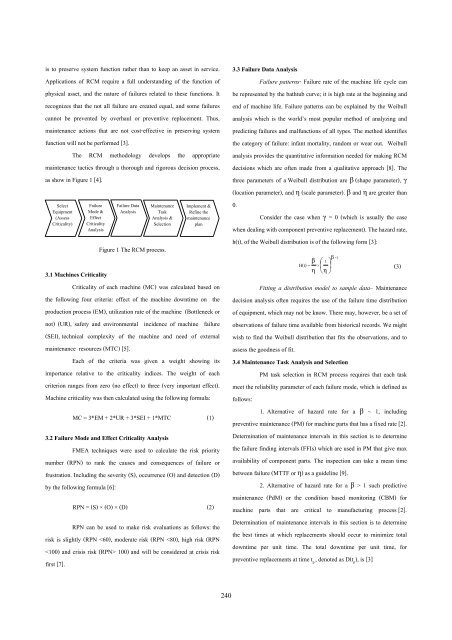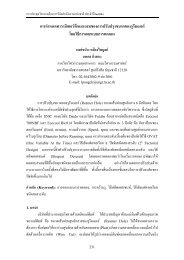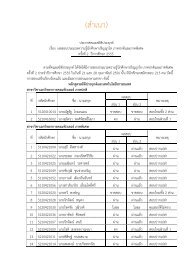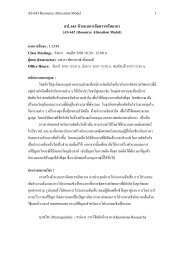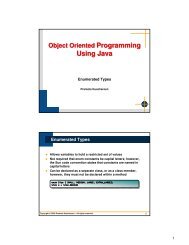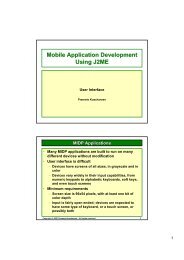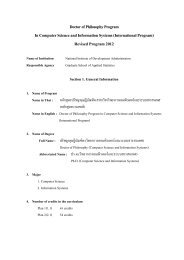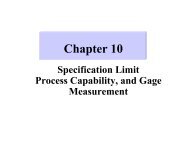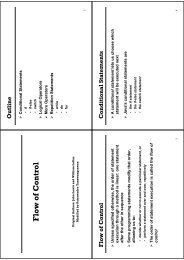ดาวน์โหลด All Proceeding - AS Nida
ดาวน์โหลด All Proceeding - AS Nida
ดาวน์โหลด All Proceeding - AS Nida
Create successful ePaper yourself
Turn your PDF publications into a flip-book with our unique Google optimized e-Paper software.
is to preserve system function rather than to keep an asset in service.<br />
Applications of RCM require a full understanding of the function of<br />
physical asset, and the nature of failures related to these functions. It<br />
recognizes that the not all failure are created equal, and some failures<br />
cannot be prevented by overhaul or preventive replacement. Thus,<br />
maintenance actions that are not cost-effective in preserving system<br />
function will not be performed [3].<br />
The RCM methodology develops the appropriate<br />
maintenance tactics through a thorough and rigorous decision process,<br />
as show in Figure 1 [4].<br />
Select<br />
Equipment<br />
(Assess<br />
Criticality)<br />
Failure<br />
Mode &<br />
Effect<br />
Criticality<br />
Analysis<br />
Failure Data<br />
Analysis<br />
Maintenance<br />
Task<br />
Analysis &<br />
Selection<br />
Figure 1 The RCM process.<br />
Implement &<br />
Refine the<br />
maintenance<br />
plan<br />
3.1 Machines Criticality<br />
Criticality of each machine (MC) was calculated based on<br />
the following four criteria: effect of the machine downtime on the<br />
production process (EM), utilization rate of the machine (Bottleneck or<br />
not) (UR), safety and environmental incidence of machine failure<br />
(SEI), technical complexity of the machine and need of external<br />
maintenance resources (MTC) [5].<br />
Each of the criteria was given a weight showing its<br />
importance relative to the criticality indices. The weight of each<br />
criterion ranges from zero (no effect) to three (very important effect).<br />
Machine criticality was then calculated using the following formula:<br />
MC = 3*EM + 2*UR + 3*SEI + 1*MTC (1)<br />
3.2 Failure Mode and Effect Criticality Analysis<br />
FMEA techniques were used to calculate the risk priority<br />
number (RPN) to rank the causes and consequences of failure or<br />
frustration. Including the severity (S), occurrence (O) and detection (D)<br />
by the following formula [6]:<br />
RPN = (S) × (O) × (D) (2)<br />
RPN can be used to make risk evaluations as follows: the<br />
risk is slightly (RPN


